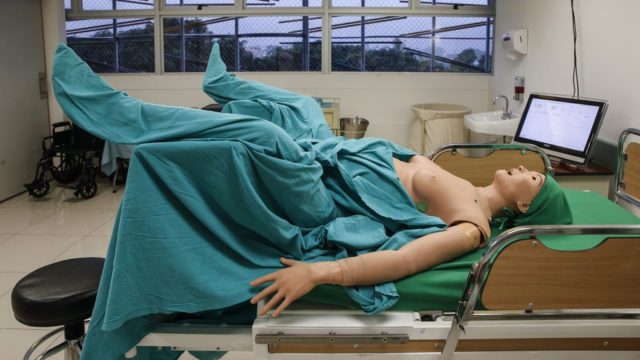Childbirth is a natural process that begins spontaneously and whose climax is the birth of a baby, and it is not always necessary for it to be medicalized. Its duration is highly variable. As it is a physiological process, we can ensure that these conditions do not change and that childbirth follows its normal course.
According to the Spanish Society of Gynecology and Obstetrics (SEGO), natural childbirth:
- Occurs between week 37 and 42 of gestation
- The fetus is placed head first, in the so-called cephalic presentation.
- The evolution of the dilation period as well as the expulsive period of the baby is normal
- Ends the smooth delivery of a newborn, a delivery (or delivery of the placenta), and a proper adaptation of the baby to life outside the womb
Until the 1980s, many births took place in the mother’s home, with the assistance of a midwife or midwife, even assisted by relatives and neighbors. The mother was only transferred to a health center only in case of serious complications. This fact was associated with a higher rate of maternal and fetal problems, infections, postpartum bleeding, as well as more fetal mortality.
The woman in labor was the center of attention of those around her and the one who mainly received support to overcome childbirth, to tolerate pain and cope with the situation. The future newborn, the fetus or the baby, had a more secondary role, less important, since there were no means to control its state during the process.
Starting in the 1980s, delivery assistance began, almost universally, to be carried out in hospitals. Probably this fact changed the form of attention to women during it, losing the protagonism of women, becoming a less humane, more medicalized procedure. It should be added that the appearance of ultrasound technology, which allowed the control of the fetal heart rate during childbirth, and represented a great revolution to promote and protect fetal well-being during childbirth, affected delivery assistance, intervening this by means of a universal way by means of the so-called cardiotocography.
We must not forget that technology has represented a very important advance in the control of the birth process, reducing fetal morbidity in this process, neonatal seizures, cerebral palsy and generalized developmental problems.
Minimally medicalized childbirth, low intervention childbirth aims to avoid any medical action, the use of drugs or analgesics, in order not to alter the birth process or accelerate it.
This type of delivery is performed in clinics and hospitals, both in the public health network or in private centers, responding to the number of which is progressively increasing.

What is low-intervention delivery like?
- The woman is admitted to the hospital during the established period of dilation
- Does not require venoclysis or intravenous route, it is not necessary to give oxytocin to promote contractions
- Anesthetic techniques such as epidural anesthesia are not applied
- Allows the ambulation and mobilization of the parturient and the choice of posture for the moment of delivery. That is to say, it is all that childbirth that evolves favorably physiologically, without the use of other measures.
This type of delivery is not incompatible with a procedure in which maternal-fetal safety is monitored and promoted. For this, maternal constants must be taken periodically, as well as the fetal heart rate during the process.
A decade ago, a normal childbirth care protocol, or low-intervention childbirth, was defined, which should not be at odds with safe childbirth care, abandoning the policy of intervention and medicalization that currently prevails in our hospital environment in the cases where it is not necessary.
In non-intervened childbirth care, surveillance of the maternal and fetal status should not be forgotten, as well as promoting psychological and emotional care for the parturient and companions.
This security is maintained with the following measures:
- Taking constants from the mother every 2 hours during the dilation period, which consists of taking heart rate, blood pressure and temperature.
- With continuous cardiotocography to the fetus or intermittent cardiotocography. The latter consists of auscultation of the fetal heartbeat every 15 minutes for at least 60 seconds and after a contraction. For this, there must be a midwife for each parturient in order to provide optimal assistance. This requirement can be complex and sometimes cannot be performed for obvious reasons, so continuous cardiotocography should be chosen.
During the expulsive period, continuous auscultation is recommended, or in the case of intermittent preference, the fetal heart rate should be established twice every 5 minutes and after a contraction.

For those who have experienced shifts in consciousness and know that more peace, joy, and love awaits in a better living environment. A bold shared vision. A living community and hub for innovation. A sustainable ecosystem for living and working. A model for the new future.
